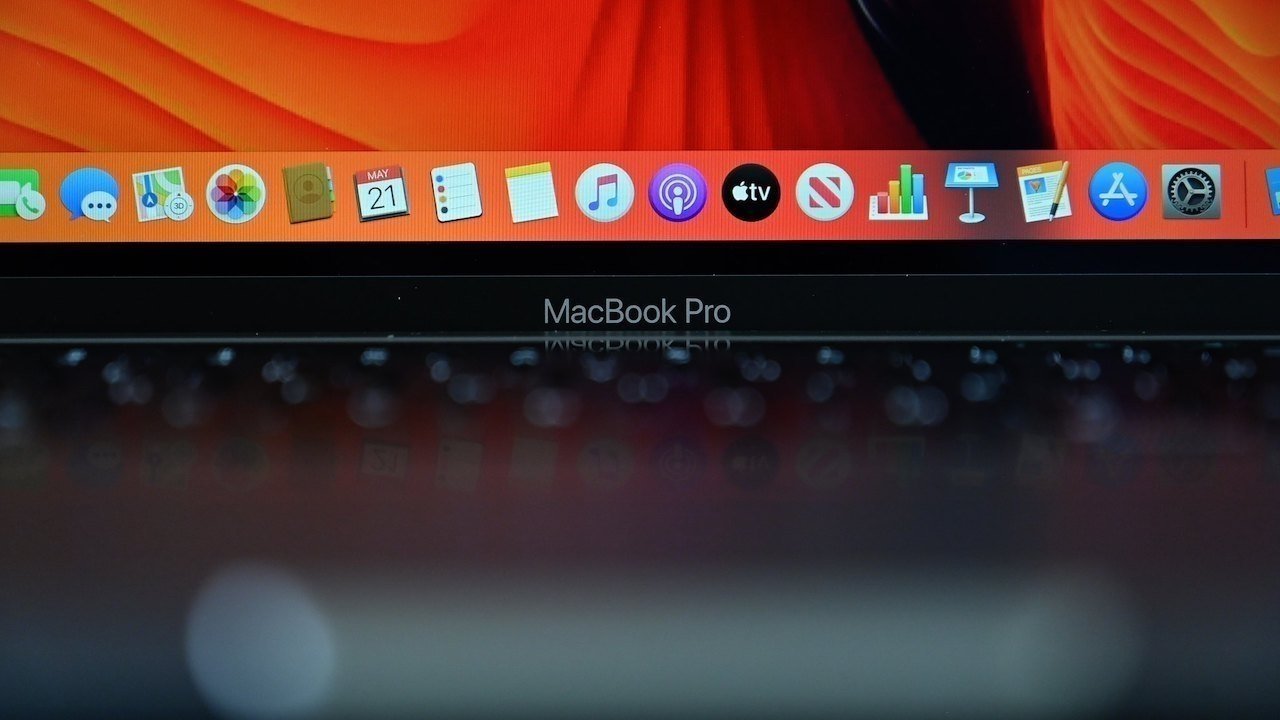Unreleased MacBook Pro screen resolutions discovered in macOS Monterey beta
Code discovered in the latest macOS Monterey beta hints at two new display resolutions that align with rumored MacBook Pro refreshes due this fall.

According to code spelunker Steve Moser, macOS Monterey includes mention of "3456 x 2234 Retina" and "3024 x 1964 Retina" screen resolutions, specifications that do not correspond to MacBooks in Apple's existing lineup, reports MacRumors.
While not confirmed, the resolutions appear to reveal information about next-generation 14- and 16-inch MacBook Pro models that are rumored to launch later this fall.
As noted in the report, the current 13- and 16-inch MacBook Pro models boast pixel densities of 227 pixels per inch and 226 ppi, respectively. Specifically, the 13-inch variant has a screen resolution of 2560-by-1600 pixels, while the 16-inch version includes a 3072-by-1920 pixel panel.
When applied to display sizes expected to debut with next-generation models, the resolutions referenced in Apple's beta code bump pixel density to about 250ppi. Importantly, that specification would allow for comfortable viewing at 2x Retina scaled resolutions, the report notes.
Current MacBook Pro models are configured at default scaled resolutions that are larger than, but not exactly "2x," the panel's native capabilities. The supposed increase in pixel density could enable "true" doubling of scaled resolutions.
Apple is rumored to launch 14- and 16-inch MacBook Pro models with Apple Silicon chips, Mini LED backlights, upgraded front-facing camera, a nixed Touch Bar and more. Recent rumblings suggest the hardware will debut at a special event potentially set for October.
Read on AppleInsider

According to code spelunker Steve Moser, macOS Monterey includes mention of "3456 x 2234 Retina" and "3024 x 1964 Retina" screen resolutions, specifications that do not correspond to MacBooks in Apple's existing lineup, reports MacRumors.
While not confirmed, the resolutions appear to reveal information about next-generation 14- and 16-inch MacBook Pro models that are rumored to launch later this fall.
As noted in the report, the current 13- and 16-inch MacBook Pro models boast pixel densities of 227 pixels per inch and 226 ppi, respectively. Specifically, the 13-inch variant has a screen resolution of 2560-by-1600 pixels, while the 16-inch version includes a 3072-by-1920 pixel panel.
When applied to display sizes expected to debut with next-generation models, the resolutions referenced in Apple's beta code bump pixel density to about 250ppi. Importantly, that specification would allow for comfortable viewing at 2x Retina scaled resolutions, the report notes.
Current MacBook Pro models are configured at default scaled resolutions that are larger than, but not exactly "2x," the panel's native capabilities. The supposed increase in pixel density could enable "true" doubling of scaled resolutions.
Apple is rumored to launch 14- and 16-inch MacBook Pro models with Apple Silicon chips, Mini LED backlights, upgraded front-facing camera, a nixed Touch Bar and more. Recent rumblings suggest the hardware will debut at a special event potentially set for October.
Read on AppleInsider

Comments
such appears to be possible:
www.dell.com/en-us/shop/dell-laptops/new-xps-15-laptop/spd/xps-15-9510-laptop/xn9510cto225s
15.6" UHD+ (3840 x 2400) InfinityEdge Touch Anti-Reflecitve 500-Nit Display
and perhaps appropriate
"When watching your 4K screen the ideal place to sit is between 1-1.5 times the screen size of your TV."
www.techradar.com/news/tv-viewing-distance
...offering full frame for Final Cut Pro on the road...?
(nobody seems to be considering the possibility that Micro LED will be an optional upgrade…)
So even the crappiest laser printers at 300 dpi are out-performing the best screens. To read an 8.5 x 11 page, we typically don't hold it much closer to our eyes than laptop screens, and yet 300 dpi seems to be the bare minimum for quality text and line work.
Another thing to point out is that even though you might not be able to resolve the individual pixels, the higher resolution screens help avoid aliasing artifacts. Not as noticeable for moving content (video) but definitely noticeable on static images like text, architectural plans, and still images. Also, look up vernier acuity or hyperacuity for more info on visual perception of humans. We can visually detect much more information than many realize.
Now, whether the higher resolution screens are important to any particular individual is another matter. You don't have to have a 220-250 dpi screen if you don't want. But don't say nobody can tell the difference.
The miniLED on the iPad Pro 12.9, the top image, is totally what I was hoping for. It's 99% of what an OLED gives you in terms of contrast, and will blast out the nits in bright lighting conditions. It will have blooming in totally dark conditions, but it will perform better in sun light conditions. Sounds like the right tradeoff for a laptop until OLEDs can get brighter and more robust or until microLEDs are productized.